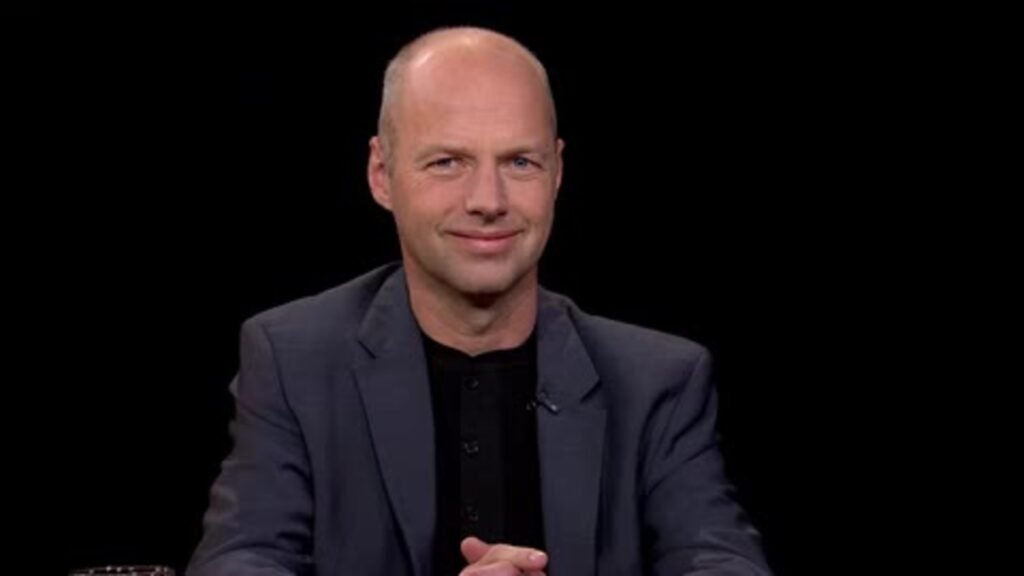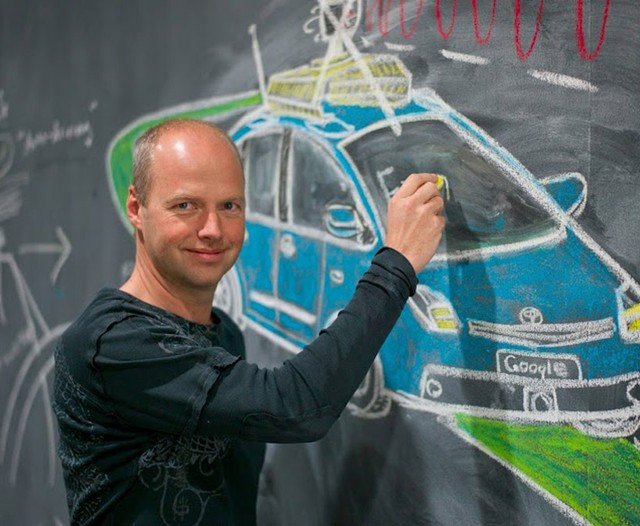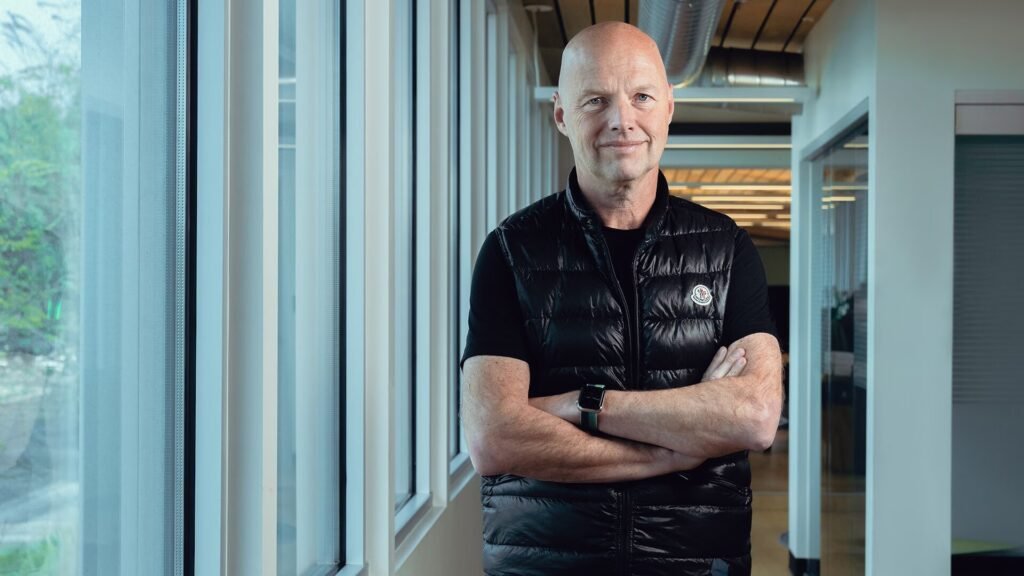Sebastian Thrun Then and Now
Sebastian Thrun Then
Sebastian Thrun, born on May 14, 1967, in Solingen, West Germany, is a distinguished figure in the fields of computer science, artificial intelligence, and robotics.
He grew up in a family that fostered a strong educational environment, with his father, Winfried, and mother, Kristin (Grüner), encouraging intellectual pursuits.
This foundation led Thrun to pursue a rigorous academic path, starting with his Vordiplom in computer science, economics, and medicine at the University of Hildesheim in 1988.
This intermediate examination provided him with a solid grounding in multidisciplinary studies, combining technical knowledge with an understanding of economic and medical contexts.
Thrun’s academic journey continued at the University of Bonn, where he earned his Diplom in 1993 and subsequently completed his Ph.D. in 1995, graduating summa cum laude.

His doctoral research, which focused on computer science and statistics, showcased his aptitude for tackling complex problems and contributed significantly to the academic community.
This period marked the beginning of his influential career, as Thrun’s work laid the groundwork for advancements in artificial intelligence and machine learning.
His expertise and innovative approaches attracted attention, leading to various collaborations and projects that would shape the future of autonomous systems.
Related Article: Adam D’Angelo Then and Now
Throughout his career, Thrun has received numerous honorary Ph.D. degrees from prestigious European universities, a testament to his contributions to the field and his lasting impact on education and research.
These accolades reflect not only his academic excellence but also his commitment to advancing technology for societal benefit.
As a thought leader in artificial intelligence, Thrun continues to inspire future generations of researchers and practitioners, solidifying his legacy as a pioneer in the realms of robotics and autonomous vehicles.
Related Article: Bret Taylor Then and Now
Sebastian Thrun Career
In 1995, Sebastian Thrun joined the Computer Science Department at Carnegie Mellon University (CMU) as a research computer scientist, marking a significant step in his academic career.
His innovative work in robotics and artificial intelligence quickly gained recognition, leading to his promotion to assistant professor in 1998.
During this time, Thrun co-directed the Robot Learning Laboratory, where he focused on developing machine learning algorithms that allowed robots to learn from their experiences.
His contributions were instrumental in establishing the Master’s Program in Automated Learning and Discovery, which eventually evolved into a Ph.D. program dedicated to machine learning and scientific discovery.
Related Article: Chris Wanstrath Then and Now
This initiative demonstrated Thrun’s commitment to advancing education in cutting-edge fields and nurturing the next generation of researchers.
Thrun’s academic journey took him to Stanford University in 2001, where he spent a sabbatical year deepening his research in artificial intelligence.
Upon his return to CMU, he was appointed to an endowed professorship as the Finmeccanica Associate Professor of Computer Science and Robotics, further solidifying his reputation as a leader in his field.
In July 2003, he transitioned to Stanford University as an associate professor and was soon appointed the director of the Stanford Artificial Intelligence Laboratory (SAIL) in January 2004.
Related Article: Tom Preston-Werner Then and Now
His tenure at Stanford from 2007 to 2011 as a full professor of computer science and electrical engineering was marked by significant contributions to autonomous systems and robotics, reinforcing his position at the forefront of research and innovation.
In April 2011, Thrun made a pivotal career move by relinquishing his tenure at Stanford to join Google as a Google Fellow.
This transition allowed him to apply his academic expertise in a practical setting, where he worked on groundbreaking projects, including the development of the Google driverless car system.
His success in this area was highlighted by his team’s performance in the DARPA Grand Challenge, where they secured victory, and their impressive second-place finish in the DARPA Urban Challenge.
Related Article: Justin Kan Then and Now
Thrun’s work at Google showcased his ability to translate theoretical research into real-world applications, pushing the boundaries of technology.
In January 2012, he co-founded Udacity, an online educational platform focused on providing massive open online courses (MOOCs).
This initiative reflected his vision of making high-quality education accessible to a broader audience, further emphasizing his influence in both academia and the tech industry.
Additionally, Thrun’s insights into artificial intelligence were featured in the 2018 documentary “Do You Trust This Computer?”, where he discussed the implications and future of AI technology, reinforcing his status as a thought leader in the field.
Related Article: Emmett Shear Then and Now

Robotics
Sebastian Thrun’s contributions to autonomous robotic systems have earned him international acclaim and significantly advanced the field of robotics.
One of his early projects, the Rhino project at the University of Bonn, was initiated in 1994 in collaboration with his doctoral thesis advisor, Armin B. Cremers.
This project laid the groundwork for Thrun’s later innovations in robotic navigation and autonomy.
In 1997, Thrun and his colleagues, Wolfram Burgard and Dieter Fox, developed the world’s first robotic tour guide, which was deployed at the Deutsches Museum Bonn.
Related Article: Kevin Systrom Then and Now
This pioneering robot demonstrated the potential for robotics in public engagement and education, showcasing how robots could interact with and inform visitors in real time.
The success of this initiative led to the creation of “Minerva,” a follow-up robot installed in 1998 at the Smithsonian’s National Museum of American History.
Minerva guided tens of thousands of visitors over a two-week deployment, highlighting the practical applications of robotics in enhancing the visitor experience in museums.
Thrun’s innovative work did not stop there; he founded the CMU/Pitt Nursebot project, which introduced an interactive humanoid robot designed to assist in nursing homes near Pittsburgh, Pennsylvania.
Related Article: Mike Krieger Then and Now
This project underscored his commitment to applying robotics to improve healthcare and support the elderly.
In 2002, he collaborated with William L. Whittaker and Scott Thayer at Carnegie Mellon University to develop mine-mapping robots, contributing to efforts to enhance safety and efficiency in hazardous environments.
His move to Stanford University in 2003 marked another significant chapter in his career, where he developed the robot Stanley, which won the prestigious DARPA Grand Challenge in 2005.
This achievement was not only a milestone for Thrun and his team but also a pivotal moment in the field of autonomous vehicles.
Related Article: Chris Hughes Then and Now
Michael Montemerlo, a former graduate student of Thrun, played a crucial role in the software development for Stanley, further exemplifying Thrun’s influence on the next generation of roboticists.
In 2007, Thrun’s robot “Junior” claimed second place in the DARPA Urban Challenge, solidifying his reputation as a leader in the robotics community.
Following these accomplishments, he joined Google as part of a sabbatical, bringing several Stanford students with him.
At Google, Thrun co-developed Google Street View, leveraging his expertise to enhance mapping technologies and contribute to the company’s vision of global connectivity.
Related Article: Dustin Moskovitz Then and Now
Beyond his practical contributions, Thrun has made significant theoretical advancements in the field of robotics, particularly in probabilistic robotics.
This area combines statistics with robotics to improve the accuracy and reliability of robotic systems.
Thrun and his research group have made substantial contributions to mobile robot localization, developing techniques such as Monte Carlo Localization and simultaneous localization and mapping (SLAM).
These probabilistic methods have become mainstream in robotics, facilitating various commercial applications.
Related Article: Aaron Levie Then and Now
In 2005, Thrun co-authored a textbook titled Probabilistic Robotics, along with long-time collaborators Dieter Fox and Wolfram Burgard, which has become a foundational resource in the field.
The textbook’s Japanese translation has made its insights accessible to a broader audience, reflecting Thrun’s global impact on robotics education.
In addition to his research and academic endeavors, Thrun is also a principal investor in the Stanford spin-off VectorMagic, further demonstrating his commitment to fostering innovation and entrepreneurship in the technology sector.
Through his work, Thrun continues to inspire future generations of researchers and engineers, shaping the trajectory of robotics and artificial intelligence.
Related Article: Noah Glass Then and Now
Sebastian Thrun Now

Sebastian Thrun, now 57 years old, is a prominent German-American entrepreneur, educator, and computer scientist known for his significant contributions to robotics and artificial intelligence.
Currently, he serves as the CEO of Kitty Hawk Corporation, a company focused on developing innovative flying vehicles and personal air transportation solutions.
Under Thrun’s leadership, Kitty Hawk aims to revolutionize urban mobility by harnessing cutting-edge technology and engineering, reflecting his lifelong commitment to advancing transportation systems.
His work at Kitty Hawk embodies the intersection of robotics, aeronautics, and entrepreneurship, as he continues to explore new frontiers in technology.
Related Article: Baiju Bhatt Then and Now
In addition to his role at Kitty Hawk, Thrun is the chairman and co-founder of Udacity, an online education platform that offers massive open online courses (MOOCs).
Udacity was established in 2012 with the vision of providing accessible, high-quality education in technology and computer science.
The platform has played a significant role in democratizing education, allowing learners worldwide to acquire skills in areas such as artificial intelligence, data science, and programming.
Thrun’s dedication to education is evident in Udacity’s curriculum, which emphasizes practical, hands-on learning experiences designed to prepare students for careers in the tech industry.
Related Article: Vlad Tenev Then and Now
By focusing on skills that are in high demand, Udacity has become a leading provider of online education, reflecting Thrun’s belief in the importance of continuous learning in a rapidly evolving job market.
Prior to his entrepreneurial ventures, Thrun enjoyed a distinguished academic career.
He served as a professor of computer science at Stanford University and previously at Carnegie Mellon University, where he was instrumental in shaping the fields of robotics and artificial intelligence.
His research has laid the foundation for many advancements in these areas, particularly in probabilistic robotics and autonomous systems.
Related Article: John Collison Then and Now
As a Google VP and Fellow, Thrun contributed to significant projects, including the development of Google’s driverless car technology, which further solidified his reputation as a leader in the tech industry.
Thrun’s multifaceted career, blending academia, research, and entrepreneurship, showcases his commitment to innovation and education.
His work continues to impact both the fields of robotics and online learning, as he strives to create solutions that enhance human mobility and accessibility to education in the digital age.
Through Kitty Hawk and Udacity, Thrun exemplifies the spirit of entrepreneurial leadership, inspiring a new generation of technologists and learners worldwide.
Related Article: Max Levchin Then and Now
FAQs
Sebastian Thrun is currently the CEO of Kitty Hawk Corporation, focusing on developing innovative flying vehicles and personal air transportation solutions.
He continues to influence the fields of robotics and technology while promoting accessible education through Udacity.
Sebastian Thrun is the CEO of Kitty Hawk Corporation, leading the company’s efforts in advanced transportation technologies.
Sebastian Thrun is a co-founder of Udacity, an online education platform that offers courses in technology and computer science, aimed at providing accessible, high-quality education.






























